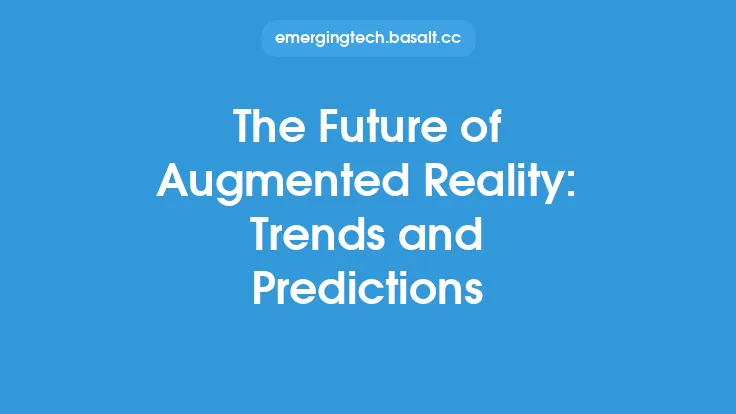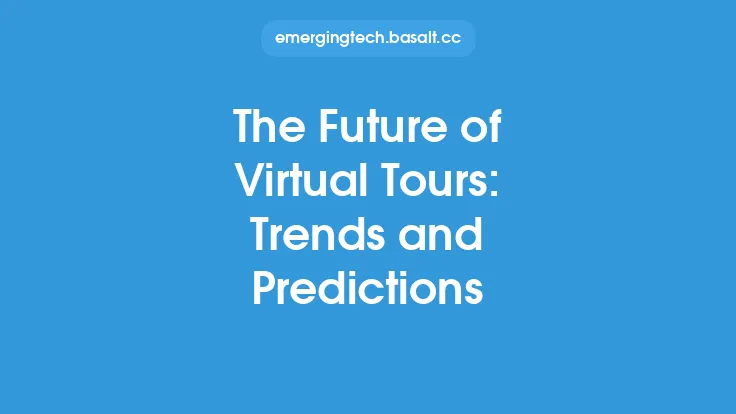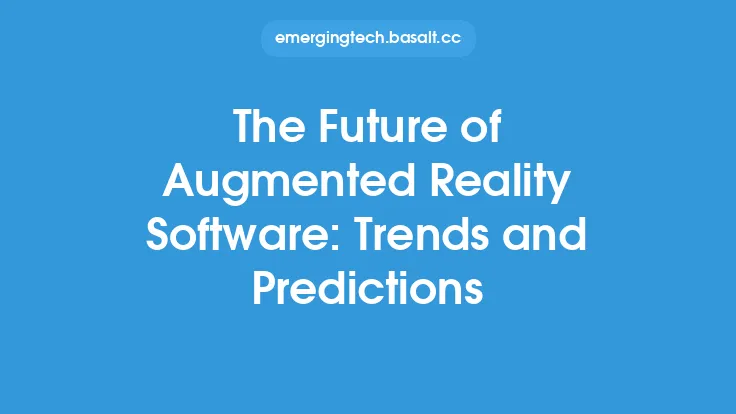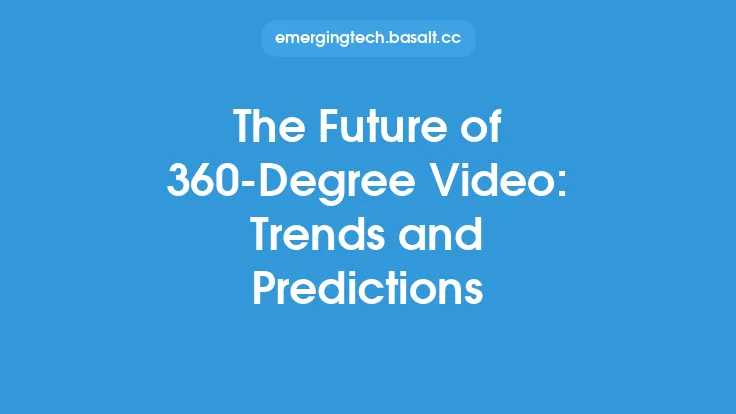The concept of virtual reality (VR) has been around for decades, but it's only in recent years that the technology has advanced to the point where it's become a viable and immersive experience for consumers. As VR continues to evolve, it's likely that we'll see significant advancements in the field, leading to new and innovative applications across various industries. In this article, we'll explore the current trends and predictions for the future of virtual reality, highlighting the key developments that will shape the industry in the years to come.
Introduction to Virtual Reality Technology
Virtual reality technology uses a combination of hardware and software to create a simulated environment that can be experienced by users. This environment can be entirely virtual, or it can be a hybrid of virtual and real-world elements. The core components of VR technology include a headset or display device, sensors, and controllers. The headset provides a stereoscopic display, allowing users to see the virtual environment in 3D. Sensors track the user's movements, enabling them to interact with the virtual environment. Controllers provide a way for users to manipulate objects and navigate the virtual space.
Advancements in Virtual Reality Hardware
One of the key drivers of the VR industry is the advancement of hardware technology. In recent years, we've seen significant improvements in the resolution, field of view, and latency of VR headsets. The introduction of standalone headsets, such as the Oculus Quest, has also made VR more accessible and convenient for consumers. These headsets don't require a PC or console to operate, making them more portable and user-friendly. Furthermore, the development of advanced controllers, such as those using hand tracking technology, is enabling more precise and intuitive interactions with virtual objects.
Virtual Reality Software and Content
The growth of the VR industry is also dependent on the development of high-quality software and content. This includes games, experiences, and applications that take advantage of the unique capabilities of VR technology. We're seeing a proliferation of VR content across various genres, from first-person shooters and puzzle games to educational experiences and interactive stories. The development of more sophisticated VR engines, such as Unity and Unreal Engine, is also making it easier for creators to build and deploy VR content.
Cloud Rendering and Virtual Reality
Cloud rendering is a technology that allows for the rendering of complex graphics and simulations in the cloud, rather than on local hardware. This has significant implications for the VR industry, as it enables the delivery of high-quality, graphics-intensive experiences to users without the need for expensive hardware. Cloud rendering also enables more efficient and cost-effective development of VR content, as creators can focus on building experiences without worrying about the underlying infrastructure.
Virtual Reality and 5G Networks
The rollout of 5G networks is expected to have a significant impact on the VR industry. With 5G, users will be able to access high-bandwidth, low-latency connections, enabling the seamless transmission of VR content. This will be particularly important for applications such as cloud rendering, where fast and reliable connections are essential. The combination of 5G and VR is also expected to enable new use cases, such as remote training and education, and immersive telepresence.
Predictions for the Future of Virtual Reality
As VR technology continues to evolve, we can expect to see significant advancements in the field. Some predictions for the future of VR include the widespread adoption of standalone headsets, the development of more sophisticated controllers and input devices, and the growth of VR content across various industries. We can also expect to see more emphasis on social VR experiences, enabling users to interact with each other in virtual environments. Furthermore, the development of more advanced VR engines and tools will make it easier for creators to build and deploy high-quality VR content.
Challenges and Limitations of Virtual Reality
Despite the significant advancements in VR technology, there are still several challenges and limitations that need to be addressed. These include the cost and accessibility of VR hardware, the limited content available, and the potential for motion sickness and other health effects. Additionally, there are concerns around the social implications of VR, including the potential for addiction and social isolation. As the VR industry continues to grow, it's essential that these challenges and limitations are addressed, and that the technology is developed in a way that is safe, accessible, and beneficial for users.
Conclusion
The future of virtual reality is exciting and full of possibilities. As the technology continues to evolve, we can expect to see significant advancements in hardware, software, and content. The growth of the VR industry will be driven by the development of more sophisticated and accessible technology, as well as the creation of high-quality content and experiences. While there are still challenges and limitations to be addressed, the potential benefits of VR make it an industry worth watching in the years to come. As VR becomes more mainstream, it's likely that we'll see new and innovative applications across various industries, from entertainment and education to healthcare and beyond.





